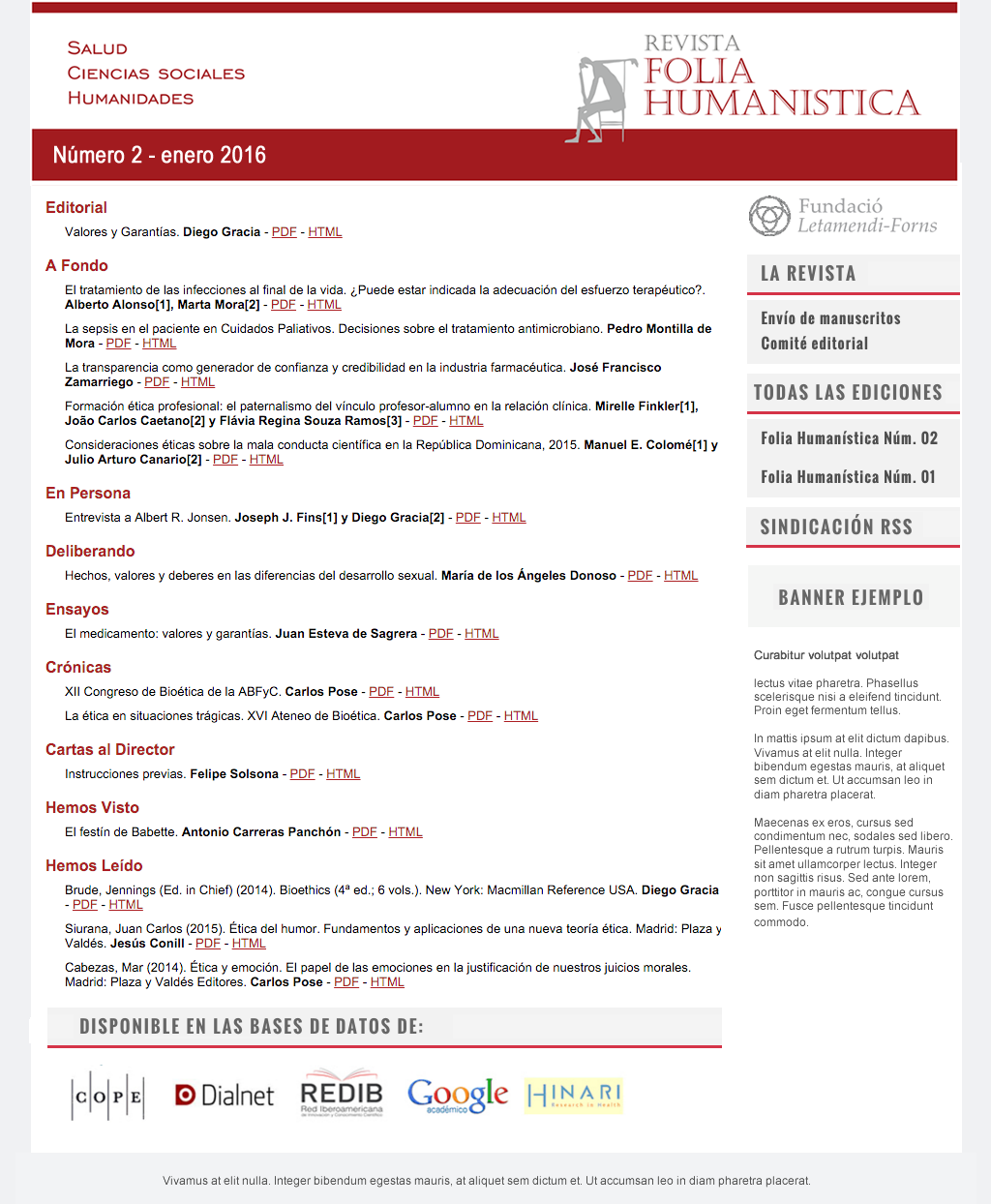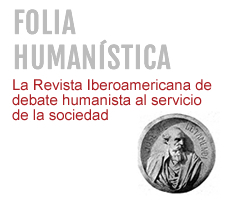El modelo premoderno de relación médico-paciente
DOI:
https://doi.org/10.30860/0073Keywords:
Doctor-patient relationship, History of medicine, Helping relationshipAbstract
The healer-sick relationship is a helping relationship conditioned by the principle of reciprocity: both, donor and recipient, obtain some benefit that must satisfy the expectations of both for the interaction to be successful.
The patient's expectations are made up of a main goal (the recovery of health and the annulment of the suffering) and a series of secondary objectives. For many centuries, the healer was unable to fulfill that main objective, due to lack of effective remedies, but this did not impair the success of the interaction, because the relationship model (which we will call premodern) had strategies to create an appearance of efficacy and to respond to the secondary expectations of the patient and the community.
We describe some of these intervention strategies, in addition to the (meager) efficacy: authority, cordiality, magical and picaresque intervention. These are complemented by the patient's attitudes, generating a kind of relationship binomials, which are kept in balance to achieve success: ineffectiveness / resignation, authority / submission, cordiality / gratitude, magic / credulity, picaresque / naivety .
These variables take different values depending on the historical stage, social class, culture, gender, etc., but they are always combined with the objective of maintaining the success of the relationship, which translates into benefit for the healer and patient satisfaction.
References
Tizón JL. Componentes psicológicos de la práctica clínica. Una perspectiva desde la atención primaria. Barcelona: Biblària SCCL; 1996. p. 26.
Ibid., p. 33.
Kaba R, Sooriakumaran P. The evolution of the doctor-patient relationship. Int. J Surg. 2007 Feb;5(1):57-65.
Ackerknecht EH. Medicina y antropología social. Madrid: Akal editor; 1985. p. 131.
García-Sabell D. En: Cunqueiro A. Escola de menciñeiros. Vigo: Editorial Galaxia; 1981. p. 23.
Fernández-Álvarez R. Enfermos pobres, médicos tristes. Compostela: Urco Editora e Fundación Vicente Risco; 2017.p. 37.
Gondar M, González E. Espiritados, ensaios de etnopsiquiatría galega. Santiago de Compostela: edicións Laiovento; 1992. p. 21.
Ackerknecht EH. Op.Cit., p. 134.
Gondar M, González E. Op. Cit., p.21.
Tratados hipocráticos. Madrid: Alianza Editorial S.A.; 1996. p. 186.
Ibid., p. 213.
Laín-Entralgo P. El médico y el enfermo. 2ª ed. Madrid: Triacastela; 2003. p. 50.
López-Férez JA. Hipócrates y los escritos hipocráticos. Origen de la medicina científica. EPOS. Revista de Filología [Sede Web]. [Citado 17-1-2020]. Disponible en: http://revistas.uned.es/index.php/EPOS/article/view/9454.
García-Ballester L. Galeno. Madrid: Ediciones Guadarrama; 1972. p. 210.
Núñez I. Status del médico y responsabilidad civil. Revue Internationale des droits de l'Antiquité, 3ème série, XLII (2000).
Gondar M, González E. Op. Cit., p.18.
López-Piñero JM. Historia de la Medicina. Madrid: Historia 16; 1990. p.172.
Gutiérrez-Rodilla BM. Las mujeres y la medicina en la edad media y primer renacimiento. Cuadernos del CEMyR, 23; marzo 2015: 121-135.
Laín-Entralgo P. Op.Cit., p. 88.
De Francisco A. Los fundamentos de la relación médico-paciente. Acta Médica Colombiana Vol. 24 N° 3. Enero-Febrero 1999: 102-11.
Lindemann M. Medicina y sociedad en la Europa moderna. 1500-1800. Madrid: Siglo XXI de España Editores S.A.; 2001. p. 228.
Ibid., p. 262.
GuillamS. The reappearance of the sick man: a landmark publication revisited. Br J Gen Pract.v.66 (653); December 2016: 616-17.
Borrell i Carriò F. La relación médico-paciente en un mundo cambiante. Humanitas, humanidades médicas: Tema del mes on-line, ISSN-e 1886-1601, Nº. 15, 2007: 1-32.
Louis-Courvoisier M, Mauron A. 'He found me very well; for me, I was still feeling sick': the strange worlds of physicians and patients in the 18th and 21st centuries. Med Humanit. 2002 Jun;28(1): 9-13.
Sokol DK. How the doctor's nose has shortened over time; a historical overview of the truth-telling debate in the doctor-patient relationship. J R Soc Med. 2006. Dec; 99(12): 632-6.
Lindemann M. Op. Cit., p.258.
Schmitz C. Práctica médica en el espacio virtual: Relaciones a distancia entre Juan Muñoz y Peralta (1665-1746) y sus pacientes. Medicina e Historia. Nº 1 – 2017: 3-18.
García-Guerra D. Medicina y sociedad en Santiago. Siglo XVIII. Vigo: Pugalsa; 1992.
Ortiz-Gómez T. El papel del género en la construcción histórica del conocimiento científico sobre la mujer. En: Elvira Ramos (ed.). La salud de las mujeres: hacia la igualdad de género en salud. Madrid, Ministerio de Trabajo y Asuntos Sociales-Instituto de la Mujer, 2002: 29-42.
Marañón G. Las Ideas Biológicas del P. Feijoo. Madrid: Espasa-Calpe, S.A. 1941. p. 209.
Laín-Entralgo P. Historia de la medicina. Barcelona: Salvat Editores; 1978.
Arenal C. La Beneficencia, la filantropía y la caridad. Madrid. 1861. Apud. Trinidad Fernández P. Trabajo y Pobreza en la primera industrialización. En: Historia de la Acción Social en España. Beneficencia y Previsión. Madrid: Centro de Publicaciones Ministerio de Trabajo y Seguridad Social; 1990. p. 129.
Correa-Fernández A. Ensayo de Topografía Médica de la Provincia de Lugo. Ed. facsímil. Santiago de Compostela: Edicións do Cerne; 2002.
Foucault M. El nacimiento de la clínica. Una arqueología de la mirada médica. Siglo XXI editores, S.A. de C.V. Kindle e-book; 2013. pos. 194.
Kaba R, Sooriakumaran P. The evolution of the doctor-patient relationship. Int. J Surg. 2007 Feb;5(1):57-65.
Comelles JM. La utopía de la atención integral en salud: Autoatención, práctica médica y asistencia primaria. Revisiones en Salud Pública, 1993; 3: 169-92.
Louis-Courvoisier M, Mauron A. Art. Cit.
Borrell y Carriò F. El modelo biopsicosocial en evolución. Medicina Clínica. Volume 119, Issue 5, 2002: 175-179.
Downloads
Published
How to Cite
Issue
Section
License
La Revista Folia Humanística se adhiere a Creative Common en la modalidad: Reconocimiento – NoComercial – CompartirIgual (by-nc-sa): No se permite un uso comercial de la obra original ni de las posibles obras derivadas, la distribución de las cuales se debe hacer con una licencia igual a la que regula la obra original.








